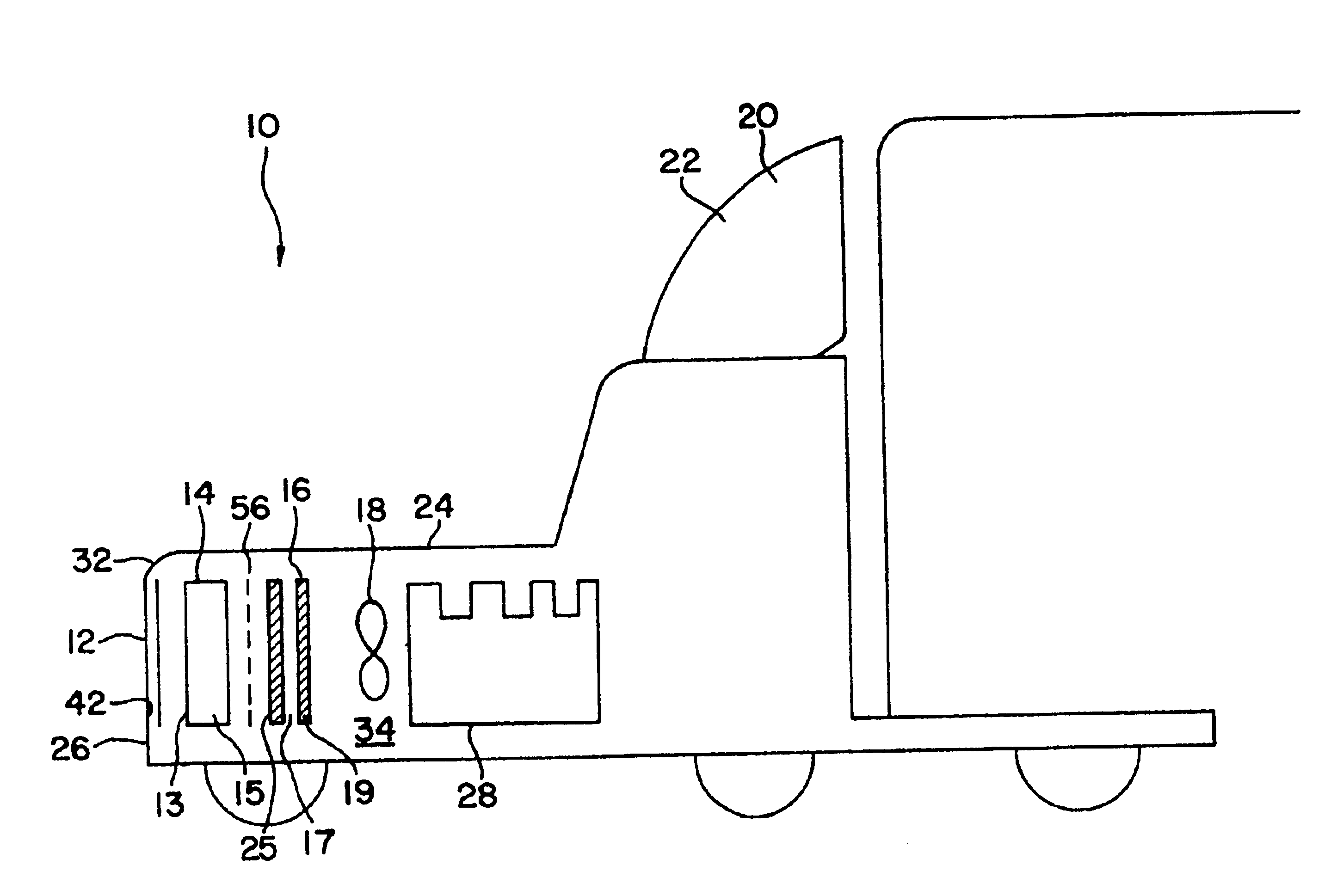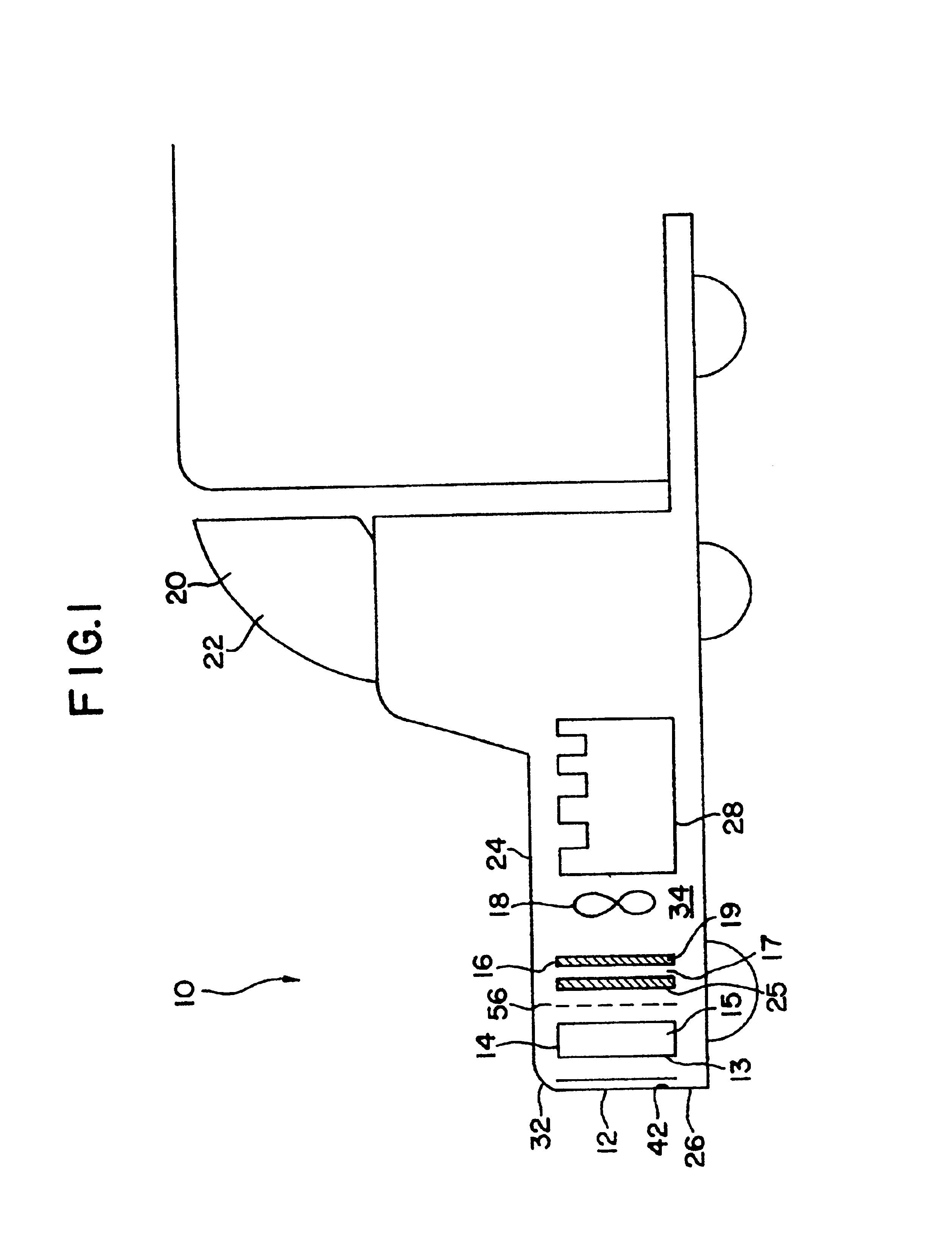Catalyst and adsorption compositions having improved adhesion characteristics
- Summary
- Abstract
- Description
- Claims
- Application Information
AI Technical Summary
Benefits of technology
Problems solved by technology
Method used
Image
Examples
example 1
[0133]A 1993 Nissan Altima radiator core (Nissan part number 21460-1E400) was heat treated in air to 450° C. for 16 hours to clean and oxidize the surface and then a portion coated with high surface area silica-alumina undercoat (dry loading=0.23 g / in3) by pouring a water slurry containing the silica-alumina through the radiator channels, blowing out the excess with an air gun, drying at room temperature with a fan, and then calcining to 450° C. The silica-alumina slurry was prepared by ball milling high surface area calcined SRS-II alumina (Davison) with acetic acid (0.5% based on alumina) and water (total solids ca. 20%) to a particle size of 90%2.yAl2O3.zH2O with 92-95% by weight Al2O3 and 4-7% by weight SiO2 after activation. BET surface area is specified to be a minimum of 260 m2 / g after calcination.
[0134]A Pd / Mn / Al2O3 catalyst slurry (nominally 10% by weight palladium on alumina) was prepared by impregnating high surface area SRS-II alumina (Davison) to the point of incipient ...
example 3
[0137]After heat treatment for 60 hours in air at 450° C., a Lincoln Town Car radiator core (part #F1VY-8005-A) was coated sequentially in 6″×6″ square patches with a variety of different ozone destruction catalyst compositions (i.e., different catalysts; catalyst loadings, binder formulations, and heat treatments). Several of the radiator patches were precoated with a high surface area alumina or silica-alumina and calcined to 450° C. prior to coating with the catalyst. The actual coating was accomplished similarly to Example 1 by pouring a water slurry containing the specific catalyst formulation through the radiator channels, blowing out the excess with an air gun, and drying at room temperature with a fan. The radiator core was then dried to 120° C., or dried to 120° C. and then calcined to 400 to 450° C. The radiator core was then reattached to its plastic tanks and ozone destruction performance of the various catalysts was determined at a radiator surface temperature of about ...
example 4
[0147]A 1993 Nissan Altima radiator core (Nissan part number 21460-1E400) was heat treated in air to 400° C. for 16 hours and then a portion coated with Condea high surface area SBA-150 alumina (dry loading=0.86 g / in3) by pouring a water slurry containing the alumina through the radiator channels, blowing out the excess with an air gun, drying at room temperature with a fan, and then calcining to 400° C. The alumina precoat slurry was prepared as described in Example 3. The radiator was then coated sequentially in 2″×2″ square patches with seven different CO destruction catalysts (Table II). Each coating was applied by pouring a water slurry containing the specific catalyst formulation through the radiator channels, blowing out the excess with an air gun, and drying at room temperature with a fan.
[0148]The CARULITE® catalyst and 2% Pt / Al2O3 catalysts (Patch #4 and #6, respectively) were prepared according to the procedure described in Example 3. The 3% Pt / ZrO2 / SiO2 catalyst (Patch #...
PUM
| Property | Measurement | Unit |
|---|---|---|
| Temperature | aaaaa | aaaaa |
| Temperature | aaaaa | aaaaa |
| Temperature | aaaaa | aaaaa |
Abstract
Description
Claims
Application Information
 Login to View More
Login to View More - R&D
- Intellectual Property
- Life Sciences
- Materials
- Tech Scout
- Unparalleled Data Quality
- Higher Quality Content
- 60% Fewer Hallucinations
Browse by: Latest US Patents, China's latest patents, Technical Efficacy Thesaurus, Application Domain, Technology Topic, Popular Technical Reports.
© 2025 PatSnap. All rights reserved.Legal|Privacy policy|Modern Slavery Act Transparency Statement|Sitemap|About US| Contact US: help@patsnap.com



